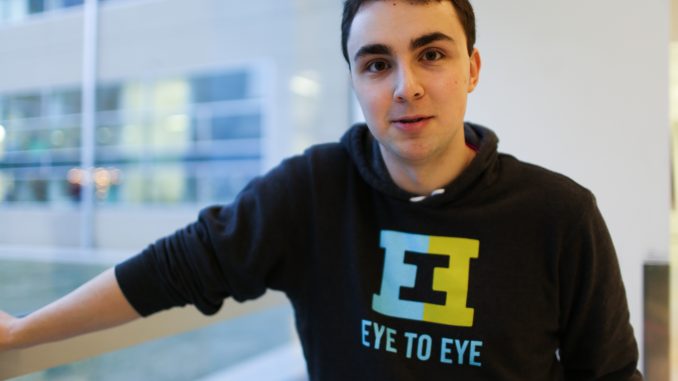
In high school, Matt Cahill established a “safe environment.” He attended Delaware Valley Friends School, in Paoli, where his circle of friends consisted of students with learning disabilities similar to his own.
“We already had a community,” said Cahill, a senior history education major who has dyslexia.
Cahill was also involved in his high school’s Eye to Eye program, an art-based national organization that takes college and high school students with learning disabilities or ADHD and pairs them with middle school students with similar disorders.
Cahill came to Temple because he liked the diversity of Main Campus in comparison to his white, affluent hometown of Haverford, he said. But he missed the support of Eye to Eye.
“I didn’t have that LD community that I grew accustomed to during high school,” Cahill said.
Aware that colleges across the country hill saw the organization as a potential way to strengthen Philadelphia’s community of disabled students.
“I brought up that there wasn’t any community on campus and an epiphany happened at that moment,” Cahill said.
The senior history and education major contacted the national office for Eye to Eye and was able to get a Temple chapter running by the end of Spring 2013, despite being told, he said, that it might take a year to get the chapter running.
Eye to Eye implements weekly art-based projects with local schools like the Clymer George School and the Cleveland Grover School, both located in North Philadelphia.
“With each project, it is a platform to have deeper conversation about self-advocacy, student strengths and to feel confident in school,” Cahill said.
One of the art projects, “My Invention,” is a critical thinking activity in which students pick a certain problem they have in the classroom and an invention they could use to solve their issue.
Cahill said one student who has trouble reading invented a microphone-like device that made it easier to understand books.
“The student unknowingly is identifying their problem, providing a solution and figuring out accommodations they can use in school,” Cahill said.
Catherine, a sophomore engineering major who chose to exclude her last name for privacy, attended the same high school as Cahill, is a mentor for Eye to Eye and is on the organization’s community outreach team.
Catherine has auditory processing disorder and is working on creating a more open community for Temple students with learning disorders.
“We are trying to get more of a voice in how professors see us,” Catherine said.
She is currently creating a Share Our Story event, which would bring students and professors to Eye to Eye mentors to discuss their educational journeys as students with learning disorders.
There are roughly 10-15 students from Temple who are mentors at each school, Cahill said. Temple’s chapter is one of Eye to Eye’s biggest in the country.
The nonprofit won Best New Organization in Spring 2014 through Student Activities at Temple.
The Temple program also has two Think Different diplomats, who visit schools and conferences nationwide to tell their disability stories.
“It is very rewarding to know we are providing these students with weekly, positive role models,” Cahill said.
Cahill, said he would like to work in education or with a non-profit and plans to stay with the Eye to Eye after graduation and continue advocating for people with disabilities.
The Eye to Eye Temple chapter is attempting to expand the program to other universities in the city and aims to not only benefit the children at Cleveland and Clymer, but Temple students as well.
“It gives me more freedom, 100 percent,” said Holly Mainiero, a senior tourism and hospitality management major. Mainiero also helped Cahill start the program at Temple.
Mainiero, who has ADD, said the program changes lives.
“A lot of people judge you for having a disability,” she said. “This program made me more open.”
Emily Scott can be reached at emily.ivy.scott@temple.edu


Be the first to comment